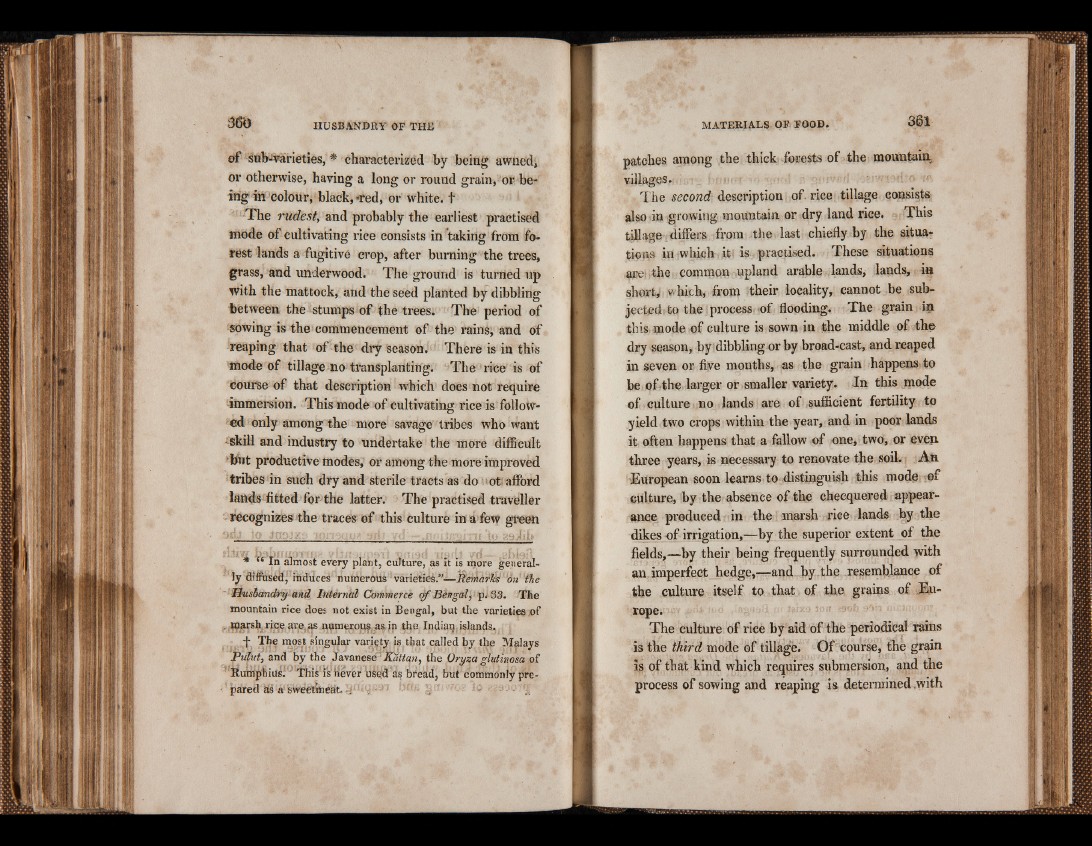
of Snb-varieties, * characterized by being awned,
or otherwise, having a long or round grain, or be-
irig in colour, black, »red, or white, t
The rudest, and probably the earliest practised
mode of cultivating rice consists in taking from forest
lands a fugitive crop, after burning the trees,
grass, and underwood. The ground is turned up
with the mattock, and the seed planted by dibbling
between the stumps of the trees. The period of
sowing is the’commencement of the rains, and of
reaping that of the dry season. There is in this
mode of tillage no transplanting. The rice is of
course of that description which does not require
immersion. This mode of cultivating rice is followed
only among the more savage tribes who want
• skill and industry to undertake the more difficult
’but productive modes, or among the more improved
tribes in such dry and sterile tracts as do ot afford
lands fitted for the latter. The practised traveller
recognizes the traces of this culture in a few green
* te In almost every plant, culture, as lit is more general-
•' ly diffused, induces numerous ! varieties.”— ‘on 'the
Husbandry and Internal Commerce o f Bengal, p. 33. The
mountain rice does not exist in Bengal, but the varieties of
, paarsh rice are, as numerous, as. in th e Indian, islands^
,-f Thf m<Mt siqgular variety is that called by the Malays
Putlii, and by the Javanese"Kattan, the Oryza glutinosa of
Rutriphius. ' This is hever used as bread, but commonly pre-
•'pared as AsWeeT^eat.3 fi'-y.3ui iwfi gmv/08 W
patches among the thick forests of the mountain
villages.
The second description of. rice tillage consists
also in growing mountain or dry land rice. This
tillage differs from the last chiefly by the situations
in »which it; is practised. These situations
are* the common upland arable .lands, lands, in
short, which, from their locality, cannot be subjected
to the process o f flooding. The grain in
this mode of culture is sown in the middle of the
dry season, by; dibbling or by broad-cast, and reaped
in seven or five months, as the grain happens to
be of the larger or smaller variety. -In this mode
of culture no lands arc of sufficient fertility to
yield two crops within the year, and in poor lands
it often happens that a fallow of one, two, or even
three years, is necessary to renovate the soil. An
•European soon learns to distinguish this mode of
culture, by the absence of the checquered appearance
produced in the marsh rice lands by the
dikes -of irrigation,—by the superior extent of the
fields,—by their being frequently surrounded with
an imperfect hedge,—and by the resemblance of
the culture itself to that of the grains of Europe.
The culture of rice by aid of the periodical rains
is the third mode of tillage. Of course, the grain
is of that kind which requires submersion, and the
process of sowing and reaping i& determined with